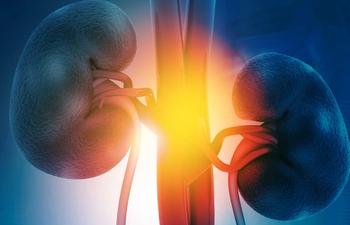
Circulating Tumor DNA May Help Guide Therapy in Metastatic RCC Patients
A new study demonstrates a relationship between radiographic tumor burden and the detection of circulating tumor DNA in patients with metastatic renal cell carcinoma.
A new study is suggesting a relationship between radiographic tumor burden and the detection of circulating tumor DNA (ctDNA) in patients with metastatic renal cell carcinoma (mRCC). Researchers at City of Hope Comprehensive Cancer Center and colleagues from Brazil and Turkey
The researchers theorize that ctDNA assessment holds the potential to complement or supplant radiographic assessment. In this current investigation, tumor burden was calculated based on the SLD. The researchers considered SLD as a continuous variable and compared the mean SLD in patients who had ctDNA detected vs those who did not. The study also examined the association between the number of mutations occurring in individual patients and SLD.
The researchers categorized responders as any patients with a complete response or partial response to therapy. Patients were categorized as non-responders who had stable disease or progressive disease. The team had previously reported on a series of 224 patients in which ctDNA was detected in 79% of patients. Among these patients, 34 had ctDNA assessment as part of their care from March 2015 to April 2017. The majority of patients were male (nâ = 18), with a median age of 62 years (range, 34–84 years).
Among the patients in the current study, clear cell RCC was the predominant histologic subtype (26 of 34), followed by 4 patients with sarcomatoid RCC and 4 patients with papillary RCC. The International Metastatic Renal Cell Carcinoma Database Consortium (IMDC) risk group was categorized as good for 14 patients, intermediate for 19, and poor for 1 patient. The majority of patients were treated with vascular endothelial growth factor (VEGF)-directed therapy (17 of 34), and an additional 5 patients received VEGF-directed therapy in combination with either immunotherapy or an mTOR inhibitor.
No associations were found between IMDC risk, histology, or treatment type and the presence or absence of ctDNA. However, patients with detectable ctDNA were found to have a higher SLD compared with patients with no detectable ctDNA (8.81 vs 4.49â cm; Pâ =â .04).
“The most important finding was that there was a correlation between radiographic tumor burden and the detection of ctDNA in mRCC,” said study investigator Jeremy Jones, PhD, an associate research professor in the department of medical oncology & therapeutics research at City of Hope Comprehensive Cancer Center in Duarte, California. “If confirmed in larger studies, it is possible that ctDNA could become a surrogate for radiographic data.”
He noted that this would save time and money. In addition, it would be less invasive for patients and provide many other benefits, including identifying actionable mutations. “The more information we have about a patient’s tumor, including how it changes over time and in response to therapy, allows us to better guide the treatment. Our data suggest that ctDNA can be used instead of the more costly and time-consuming current radiographic methods,” Jones said.
Newsletter
Stay up to date on recent advances in the multidisciplinary approach to cancer.


















































































